#sardu
Explore tagged Tumblr posts
Text
Un suldhaddu sassaresu i’ l’isthoria di la Gherra Manna/3
Lettara di Michelina Dettori La suredda di Dettori Pietro Luigi, Michelina Dettori, tre anni più minori d’eddu, sabuddu di lu fraddeddu, digussì l’ischribisi: Sassari, 28 Luglio 1915 Caro fratello, dimmi se questa cartolina ti piace Che è il Santo del tuo onomastico che sarebbe San Luigi. Adesso ti avverto di farle una preghiera la notte prima di addormentarti e poi la mattina quando ti svegli,…

View On WordPress
0 notes
Text

I had the pleasure of commissioning the lovely @killjo-q for our Call of the Netherdeep campaign poster! We are all over the moon with how beautiful this poster is, and couldn’t be more in love with how it turned out. Thank you so much for everything Kyuu!
After two wonderful years of adventuring, our campaign has come to a close. It’s been an amazing journey, and I’m so, so grateful for every moment. Very excited for what comes next!
#call of the netherdeep#cotn#art#dnd#dungeons and dragons#dnd art#exandria#pretty art#killjo-q#please check out kyuu's other works!#absolutely gorgeous#i've been staring at this for so long#oooooo i'm so excited to have this up on our wall!!!#just sad we couldn't include dermot :')#we got him back in the end though!!! was more of a wrap up session thing#galsariad ardyth#sardus#ayo jabe#maggie keeneyes#irvan wastewalker#elysylle hythenos#veira demiurguss#callen#selene#tolsimir radessa#alyxian the apotheon#perigee
24 notes
·
View notes
Text


Mods are asleep post the italian dialects map
#posting the second one too bcs the first one doesnt include griko/arbëreshë/sardu/friulan/ladino#since they are not *really* classified as italian dialects iirc#ALSO the second map includes slovenjan dialects how could i forget about them
4 notes
·
View notes
Text

btw I just looked it up and this is true but it SO downplays it. Yes, search and rescue dogs is a volunteer program, but it’s so much more intensive than this makes it sound, it’s a LOT of training and only a small number of dogs actually end up getting certified. you have to be on call just like any other search and rescue folks and YOU the human have to have the training to go into rough environments and potentially do rescue care. and you pretty much pay for it all yourself, the training for you AND the dog, and travel costs, and of course the dog themself.
https://sardogsus.org
0 notes
Text
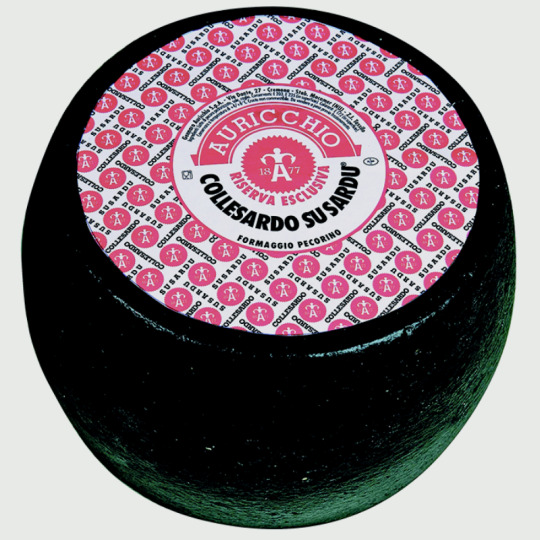

youtube
#pecorino#su sardu#auricchio#Musica sulle Bocche#internationa#jazz#festival#sardegna#castelsardo#sardinia#cheese#sheep#nature#Youtube
0 notes
Text


Art from my Kickstarter book 'Other Worlds', which has just three days to go! Click here to check it out!
"Nil the young Birrin meeting the Sardu; sapient creatures that frequent the coastline around the Valley of Two-Sky River.
Coastal Birrin communities have often formed partnerships with these sapient marine creatures, particularly co-operative hunting in which they will scout shoals for fishing boats, or dive deep for high value shellfish, in exchange for Birrin-made medicines and food.
Surviving the Fall through their intelligence and continued partnerships with remnant coastal communities, Sardu are now sometimes even employed recovering artifacts from coastal cities drowned by climate change."
313 notes
·
View notes
Text
Last time, when I posted the vague translation of an article about Tanit, a lot of people were surprised and said they were unaware of the goddess' very existence... So for those who are interested into the Punic mythology, I will list here some points one can find literaly by going to the French Wikipedia article about the Punic religion. (I precise French Wikipedia because the French and English Wikipedias sometimes do not have the same information)
(Again this is not exact or definitive stuff, just a little bit of intro ; a "little taste for the beginning of the research")
The Punic religion/mythology is the one of the city of Carthage. You know? The Great Carthage, the famed rival and enemy of Rome, Hannibal and all that. It also extended to all the cities and regions which were under Carthage's influence and control. (So we are talking the coasts of Northern Africa, the south of Spain and Italy, and other adjacent areas)
The Punic mythology is derived from the Phoenician mythology, hence why several Phoenician gods can be found back among the Punic pantheon - but differences between the Phoenician and Punic religions are attested as early as Carthage's foundation.
Despite the conquest and destruction of Carthage by the Roman Empire, the religion still went on - it is attested as having been performed during the 3rd and 2nd centuries BCE, and some theorize the Punic gods might have stayed "alive" as late as the fourth century CE.
One of the big problems when studying the Punic religion is to differentiate historical facts from biased accusations, because the Roman authors were known to heavily caricature and demonize its rites. Notably the Romans regularly accused the people of Carthage of monstrous infant-sacrifices, and the archeological discoveries are quite ambiguous as to whether there were indeed sacrifices of children or not...
As I said before, the Punic gods were born when the Phoenician gods were brought over to Northern Africa and acquired there specific traits, while also interacting with other local religions. The Punic gods are dominated by the figure of the "superior god" that is Ba'al Hammon (or just Ba'al), and which is inherited from the Phoenicians - though the Punic Ba'al and the Phoenician Ba'al are quite different from each other. Astarte, Ba'al paredra (female companion) in the Oriental religions, is also present in the Punic religion but in a secondary and "weakened" way - she was rather replaced/fused with an emblematic goddess of the Punic religion, Tanit, the paredra of the Punic Baal (and even called the "face of Baal").
Astarte was preserved as a goddess of fecundity and war, though she seems to have been moved to a "secondary" situation. Other Phoenician gods preserved include Eshmun, god of medecine, and Melkart, a god symbolizing expansion and enrichment. Melkart was quite notably fused/equated with the Greek figure of the hero-god Herakles.
Most of the gods of the Punic pantheon (except for Baal, which oversaw and dominated them all) acted as "poliads", aka as city-gods. Tanit is considered to have been the goddess of the city of Carthage, while Melkart was the patron of the city of Gades (Cadiz), and Sid the tutelar deity of Sardinia (hence his alternate name "Sardus Pater").
Ba'al Hammon, the leader of the Punic gods, was born of the meeting between the Phoenician Baal, and the Egyptian Ammon, whose cult had spread to Lybia and almost most of Northern Africa (Ba'al Hammon notably had the same ram-association as Amon). This dual god, who symbolized fire and the sun, was later, in the Roman era, assimilated with Jupiter - and it is attested that the Punic Baal (Baal-Amon-Jupiter) still had a worship when Christianity started establishing itself.
The Punic religion had some "imported" cults too. Most notably, during the Greco-Punic wars, the Punic civilization adopted the worship of Demeter and Kore, as goddesses of fertility and harvest. This was due (according to Diodorus of Sicily) to the destruction of these goddesses' temple at Syracuse in 396 BCE: after this, all sorts of disasters plagued the army of Carthage, and so the city adopted the worship of the goddesses in an attempt at appeasing them. Some archeological clue also indicate that the cult of Isis might have existed at Carthage - but it is not firmly confirmed.
The Punic gods were usually invoked when an important historical event had to take place: for example before any military campaign, they were invoked, and if a sea-expedition was successful, the gods were thanked. The Punic religion was a state-business, since there was not cleric/secular division in the Carthagian lifestyle. The priests did not have any direct or open political power, but they had an enormous influence over society - and the members of the higher ranks of the religious hierarchy all belonged to the most powerful families of Carthage.
There was an entire "society-within-a-society" linked to the temples, since each temple had its own set of barbers, slaves and servants. Sacred prostitution was also common within many Punic temples: this prostitution involved both male and female prostitutes, and to be one could be either a definitive, lifetime state, or a temporary function. There was also a whole commerce of ex-votos the followers of the god could buy in buildings linked to the temples - in fact this commerce was most developped by the sea-shores and in coastal cities, where foreigners could bring donations and offerings or receive ex-votos. In fact, the offerings of the temples (usually meat and other resources for consumption) played a big part in the economical model of Carthage. There were specific "prices" and "tariffs" when it came to offerings: we have preserved several "price lists" indicating which type and amount of offering was needed depending on the request or demand. Could be sacrificed vegetables, food, objects, but also small and big animals (usually birds for "small" and cows for "big"). The offering was shared between the priest, the offerer and the god, and then a commemorative stone was set.
A big debate point is the tophet of Carthage, the sacred area dedicated to Tanit and Baal. The thing is we have very little clues and knowledge about this area, outside of vague and repetitive texts found on the ex-votos, thanking "Tanit Pene Baal and Lord Ba'al Hammon". The problem is that some Roman writers and historians (but not all - which adds oil to the fire) said the child-sacrifices took place within this area, identifying these rituals to the sacrifices of Moloch. Some child bones were found in urns, but given no violent cause of death could be found, it is unknown if this indeed was a place of child-sacrifices, or a necropolis for dead children.
It is established that, in the Punic religion, there was a difference between the state-religion, dominated by Carthage, and a folk-religion expressed through the amulets and the talismans protecting against demons and diseases. The folk-religion was heavily influenced by the Egyptian mythology: the Egyptian god Bes was a very popular folk-god of the Punic civilization, charged with protecting both the living and the dead.
We also know a few more details of religious practices, though they stay obscure... For example we know there was a worship of the ancestors within the houses of Carthage, but we don't know how, why, when. Similarly we know the Punic civilization forbade the eating of pork - a diet restriction still efficient by the early 4th century... But why, we don't know. We also do know the Punics seemed to have a belief in life after death, because even though the funeral rites involved incineration, there were mortuary chambers decorated like a house of the living, filled with offerings of food and drinks, and perfumed before being sealed. The position of the corpse was sometimes similar to the "Oriental" rites inherited from the Phoenicians, but other times influenced by the funeral practices of the Berbers (which were one of the population with influential interactions with the Punic civilization).
Numerous elements of modern-day Northern African/Muslim cultures were directly inherited from the Punic religion. For example, the khamsa amulet is widely recognized as being a leftover of the Punic amulets ; similarly, modern-day Tunisia regularly uses the "Symbol of Tanit" (it is used within the cinematographic prize of the "Gold Tanit"). The Algerian and Tunisian expression "Baali agriculture" to designate a non-irrigated agriculture is explained as a reference to the Punic Baal, the same way the Tunisian ritual of the Umuk Tangu/Ommek Tannu (Oumouk Tangou, Ommek Tannou, "Mother Tannou/Tangou"), a rain-invocation for periods of droughts, is a survival of the goddess Tanit (of whom Tangu/Tannu are alternate names). Some go as far as to theorize that the "star and the crescent", symbol of the Muslim religion ever since the Ottoman empire popularized it, might have been influenced by the Punic religious symbols...
#punic religion#punic mythology#punic gods#gods of carthage#carthaginian gods#carthage#baal#ba'al hammon#tanit
17 notes
·
View notes
Text
happy sunday :)
this week i:
used duolingo and drops every single day
kept my position in the diamond league on duolingo
started using clozemaster for langauge learning
continued learning sardu
kept my streak on kinnu
kept up with my guitar lessons
got a bunch of cleaning done
im trying to get into a "tidy room tidy mind" mindset before my masters course starts next week (😬😬😬) so thats been helpful!! i need to sort of the rest of my timetable and my train tickets for this semester next week and maybe i'll feel a bit more prepped lol
--
song of the week:
#caffé speaks#happy sunday#studyblr#studyspo#study motivation#studying#studystudystudy#study blog#anthro studyblr#study inspo#langblr#italian langblr#language learning#Spotify
14 notes
·
View notes
Text
Bloodsucking Freaks should've stuck with its original title, The Incredible Torture Show since it is more accurate. There's only one bloodsucking freak and it's some crazy doctor. It was only retitled after Troma entertainment acquired it in 1981. I mean the other title, Sardu: Master of the Screaming Virgins would've been fine too. It kind of goes a little harder than the former two.
3 notes
·
View notes
Text
Si vutassi pi mia…inchiesta supra a pulitica linguistica in Sicilia
La lingua siciliana è unu di lu risultatu dâ evoluzioni dû latinu au latu dû sardu, francisi, spagnolu, catalanu, portuchisi, gagliegu, talianu ecc. In Sicilia parlanu sicilianu 4,6 migliuna di cristiani lassannu stari tutti i siciliani chi travaggianu fora dâ Sicilia.
La lingua siciliana è un elementu funnamintali di appartininza a na comunità. Sempre ha sidu a lingua propria da Sicilia. Accamora a nostra lingua s’attrova na situazioni di piriculu i hamu stari accura. La rialità di na lingua chi ‘un happi i ‘un havi ricanuscimentu i cu un nummmaru nicu di parlanti nu cuntestu internaziunali. Accamora è prisenti na situazioni di diglussia o bilinguismo suciali disecuilibratu, cu talianu in situazioni duminanti senza pinsari a chiddu chi significa la falta di pristiggiu suciali nû futuru di sta lingua. Ni sta situazioni gravi ja è nicissaria na pulitica linguistica pi putiri firmari lu prucessu di sustituzioni linguistica.
U primu pinseru chi li cristiani hannu cuannu si parla di lingua siciliana i di ricanuscimentu è chiddu rilativu a u piriculu di vuliri spartiri u Statu, l’appartinenza a quarchi partitu puliticu, di innipinnenza, ect. Mi pari giustu riurdari cû Forum LinguaSiciliana.org sempri ha sidu un Forum sociali senza culligamenti câ politica. Jo ‘un sugnu siparatista ni sicilianista. Sugnu ‘un sicilianu chi si cundisira talianu i europeu. U nostru scopu ha sidu sempri chiddu di travagghiari pi criari na cuscienza civili; pi fari a manera chi li siciliani ‘un si virgugnassiru di parlari i scriviri in sicilianu. P’arrinesciri a sajtari u disaggiu di sentirisi furasteri in casa propria. Pi li picciotti siciliani u sicilianu addivintau na lingua forastera na lingua ammucciata dinta i muri da casa. Pinsamu a tutti li libbra chi si pubblicanu ogn’annu in sicilianu. A maggiuria portanu a traduzioni in talianu. Picchi sti libbra, chi sunnu distinati a lu mircatu sicilianu hannu essiri scrivuti miremma in talianu? Un sicilianu avissi arrinesciri a leggiri u sicilianu. Pero ‘un u sapinu fari i si mpappinanu.
N’autru pinseru chi hannu chiddi chi ‘un sunnu d’accordu pi ricanusciri u sicilianu (i dintra di sta categoria ci sunnu puru intillittuali), è chi insignari u sicilianu a li picciliddi è na perdita di tempu i di risursi. Megghiu cuncintrarisi pu studi di li linguii furasteri. Cettu semu d’accordu cu stu concettu di canusciri megghiu i linguii forasteri però un semu d’accordu pu culligamentu chi sti intillittuali fannu pi giustificari u fattu chi ‘un s’avissi insignari u sicilianu na li scoli. I chistu mi pari chiaru pi l’Italia unni sunnu picca li cristani chi ponnu diri di canusciri na lingua forastera. Chistu significa chi in Italia l’attiggiamentu di chiusura pu sicilianu miremma s’attrova pi li lingui forasteri. I nuatri putissimu fari u stissu discursu pu talianu. A lingua taliana cumparata cu lu spagnolu, u francisi i chiossai cu l’inglisi è na lingua nica, i minurtaria pu nummaru di li cristiani chi a parlanu nu munnu. Si è na perdita di tempu i di sordi insignari u sicilianu na li scoli putissimu fari u stissu discursu pu talianu: in Italia s’avissa scriviri, parlari i comunicari sulu in inglisi, accussi semu cchiu aperti au munnu i sparagnamu sordi i tempu…Cuanti, di chiddi chi raggiunu accussi ni confronti du sicilianu, ci mittissiru a firma a stu tipu di raggiunamentu?
Nuatri chi vulemu cu sicilianu si insignassi na li scoli semu d’accordu ci ‘nzemmula s’avissi insignari di na manera cchiu forti na lingua forastera ‘nzemmla a lu sicilianu i au talianu. Na situazioni unni sunnu li cristiani chi ponnu dicidiri comu discutiri patennu da na situazioni di parità di canuscimentu linguisticu. Semu cunsapivuli chi a nostra lingua accuminciau un prucessu di assimilaziuni cu talianu. Sempri cchiu cristiani ‘un parlanu in sicilianu i li paroli si vannu pirdennu. Si cuntinuamu accussì a nostra lingua scumpari manciata pi lu talianu. Nuatri cummattemu sta situazioni i addumannamu a gran vuci l’insignamentu du sicilianu nta li scoli pi cuntrastari a perdita culturali di nostri picciotti.
Semu cunsapivuli chi pi valurizzari la nostra lingua n’hamu a moviri dintra dû cuntestu puliticu. Chiddu chi n’addumannamu i hemu addumannatu a li partiti politici in Sicilia è: zoccu facistivu o aviti in progettu di fari pi na politica linguistica in Sicilia. Pi stu mutivu cuntattamu tutti i partiti pulitici in Sicilia i li capigruppu di li gruppu pallamintari a l’ARS.
Finu accamora li unici documenti di liggi da Riggiuni Siciliana supra la valurizzaziuni dû sicilianu dû dopuguerra a oggijornu forunu la liggi n. 58 du 1953 chi detti un contributu spiciali a lu “Centro studi Filologici e Linguistici siciliani”, a liggi n. 85 du 1981 ”Provvedimenti intesi a favorire lo studio del dialetto siciliano …” i lu DPR n. 246 del 14 maggio 1985. Chistu voli a diri chi a riggiuni fu pillica na ligislaziuni linguistica i nenti s’ha fattu pi valurizzari lu sicilianu. Picchì comu sapemu ‘un si pò fari na pulitica linguistica seria lassannu li scoli dicidiri si fari cuacchi ura di attività extra-curriculari pi li piccioti di la scola e finanziannu sti tipi di attività cu sulu £ 5.000,00 pi institutu.
Puru li prupusizioni di liggi hannu mancatu. A niveddu riggiunali a sula prupusizioni intirissanti fu chidda dû diputatu riggiunali Nino Strano nû 1996 a la Riggiuni Siciliana. Sta prupusiziuni addumannava di renniri obbligatoriu u studiu da lingua, da storia i da littiratura siciliana accuminciannu du annu scolasticu 1996/1997. Sta liggi intirissava i classi cuarti i quinti da scola ilimintari cu 3 uri simanali. Di sta pripusiziuni ‘un si sappi cchiu nenti. Nuatri di LinguaSiciliana.org cuntattammu lu diputatu Ninu Strano però ‘un appimu riscontri. Lu sicilianu ‘un conta nenti i ‘un havi un rolu ufficiali nâ riggiuni. I nenti sa fattu finu accamora. I hamu pinsari chi a riggiuni putissi ligifirari pi so cuntu senza essiri in cuntrastu cu li liggi du Statu Italianu grazzi a l’articulu 14 du propriu Statutu Riggiunali chi finu accamora ‘un attruvatu n’applicaziuni china.
A niveddu naziunali li diputati siciliani nenti ficiru i nenti dissiru cuannu fu appruvata la liggi naziunali n. 482 du 15 dicemmiru 1999 supra i linguii minuritari in Italia intuata “Norme a tutela delle minoranze linguistiche storiche . Sta liggi mancu nintua au sicilianu i è in tutali cuntrastu cû l’articulu 6 da Custituzioni: “la Repubblica Italiana protegge le minoranze linguistiche…”.
A niveddu europeu a situazioni è drammatica. Putemu attruvari sulu na ‘ntirrugaziuni scritta n. E-3030/01 du 30 Ottoviru 2001 chi u diputatu europeu Francesco Musotto prisintau ammatula. Sta ‘intirrugaziuni happi na risposta ufficiali dû Commissariu Reding pi cuntu dâ Cummissioni Europea. A sustanza fu chi la Cummissioni ‘un po fari nenti contra un Statu pi addumannari mudifichi na ligislazioni supra i linguii minuritari. Pò addumannari canciamenti sulu si la liggi in chistioni è in contra a li diritti funnamintali di li cristiani.
Chista è a situazioni ginirali pi la pulitica linguistica in Sicilia. Miremma cumparannu a Sicilia cu l’autri riggiuni in Italia sauta na l’occhi la differenza di l’attività pulitica ni stu campu. Lassannu fora a Sardigna i la riggiuni Friuli, chi happiru a propria lingua ricanusciuta, hamu annintuari lu Piemonti, cû la liggi riggiunali dû 10 Aprili 1990, nummaru 26, la Lombardia, lu Venetu, l’Emilia Rumagna, la Campania, la Liguria. Tutti riggiuni a statutu ordinariu chi hannu liggi pi addifenniri a propria lingua.
Chiddu chi n’addumannamu i hemu addumannatu a li partiti politici in Sicilia i li capigruppi di l’Assemblea Riggiunali Siciliana è: zoccu faciti o aviti in progettu di fari pi na politica linguistica in Sicilia. Pi stu mutivu spiammu a tutti i partiti pulitici in Sicilia. Mannamu na littra l’8 Innaru 2005 (in talianu), i n’autra littra u 16 Innaru a tutti chiddi chi ‘un ni havianu arrispunnutu.
I risultati ‘un sunnu cunfurtanti cumu putiti biriri nâ tabedda câ sutta. I partiti chi si putissiri chiamari riggionalisti (Nuova Sicilia, FNS, Sicilia 2010, Patto per la Sicilia, Primavera Siciliana), chi avissiru essiri chiddi chi s’avissiru ‘ntirissari chiossai a la chistioni linguistica i culturali siciliana, mancu n’arrispunneru. Chi diri pi esempiu da tutali mancanza di intiressi dû Partitu “Nuova Sicilia” chi havi miremma un Consulenti Culturali” o u FNs chi hannu miremma a prumuziuni da cultura siciliana nu programma puliticu. Sta mancanza chi n’aspittavamu pi esempiu pi tutti lìautri partiti naziunali. Happimu na littra ‘ntirissanti da Giovanni Bruno, Vici-sicritariu Riggiunali dû Sdi Sicilia, chi mi passi cunsapevuli dâ prublematica. N’arrispunniu miremma u sicritariu du Partitu du Populu Sicilianu. Putiti attruvari chiddu chi n’arrispunneru cchiu sutta.
U mutivi principali dû fattu chi ‘un happimu pulitici chi n’arrispinneru pò essiri varia: chistu è un mumentu puliticu senza elezioni ni campagni elettorali; li pulitici cuntattati sunnu troppu inchiffarrati; o picchi a li pulitici siciliani ‘un intiressa pi nenti a chistioni dû sicilianu; . Vi lassu a vuatri la dicisioni finali.
Ogni jornu chi passa è na parola chi si perdi, un pezzu da nostra cultura chi scumpari pi sempri. ‘Un s’hava perdiri cchiu tempu. Cu dici chi si voli intirissari da Sicilia i da so ricchizza culturali ‘un si po scurdari da propria lingua. Nuatri ‘un ni damu abbentu.
Chisti sunnu i nostri prupusiziuni pi valurizzari a nostra lingua:
Ricanuscimentu da Riggiuni dû sicilianu comu lingua riggiunali ‘nzemmula a lingua taliana.
Insignamentu dû sicilianu nta li scoli di l’isula accuminciannu da li scoli ilimintari.
Criari na l’Univirsità siciliani (Palemmu, Missina, Catania i Castrugiuanni) na cattidra di “Lingua e letteratura siciliana”
Criari na Cummissioni Riggiunali pi la nurmalizzaziuni lingistica du sicilianu.
Utilizzu obbligatoriu dâ lingua siciliana nta l’amministrazioni pubblichi nzemmula a lingua taliana.
Diffunniri i appujari la cultura, u tiatru, la littiratura i giunnali in sicilianu.
Criaziuni di un canali tilivisivu riggiunali in lingua siciliana.
Toponomastica in sicilianu nta li strati i nta li cidadi di l’isula.
Chisti ponnu rapprisintari i primi passi di na pulitica cchiù granni cu scopu di ripigghiarisi na lingua chi cchiu passa u tempu cchiu si va pirdennu.
4 notes
·
View notes
Text
Was talking to someone about the movie Blood Sucking Freaks. The poster promises "human dart boards," "home-style brain surgery," and "dental hijinks." The dental hijinks are by far one of the most disturbing parts of the movie. Even Sardu and his little helper Ralphus seem put-off by the dentist.
3 notes
·
View notes
Note
SES SARDU ⁉️
Esatto! Purtroppo però non lo so parlare…
[Translation under ðe cut]
Ask (in Sardinian): YOU'RE SARDINIAN!?
Me (in Italian): Exactly! Unfortunately I can't speak it ðough…
3 notes
·
View notes
Photo
No honestly, they're so cute.
In my region there's the Plecotus sardus and it has reeeeally long ears and it's just 🥺🥺🥺🥺
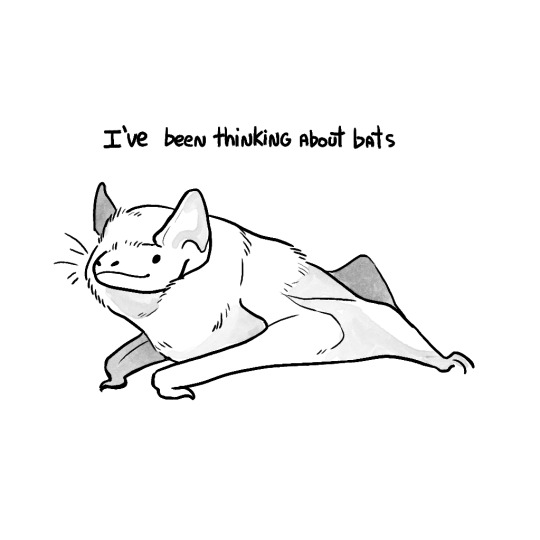
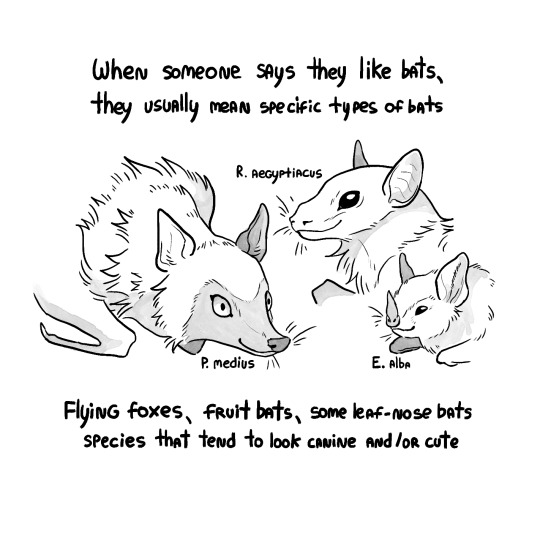
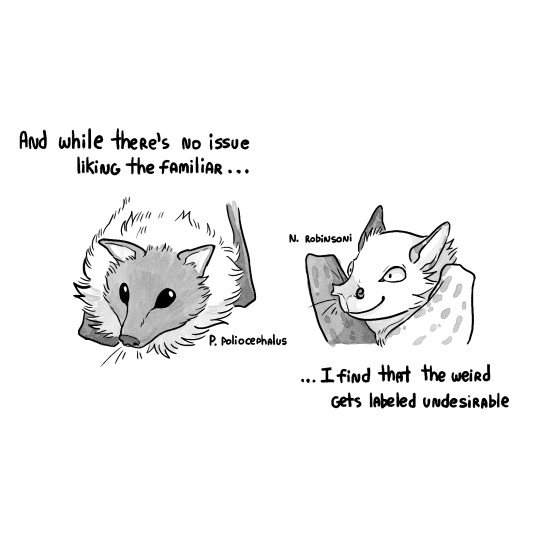
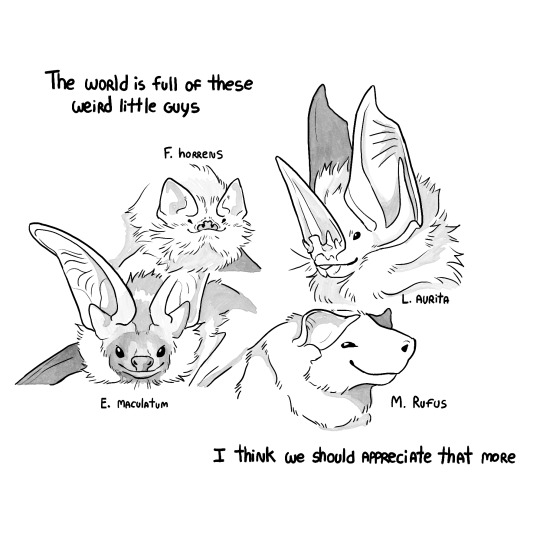
A comic (?) about my love of weird little bats for this halloween
111K notes
·
View notes
Text
Longdue announces population for the spiritual Disco spiritist fan eco elysium
Longudee, the studio settled by granting to Disco Elysium and vertical vegetables, the launch of Crowdfunding for his first game, hopettling. A limited number of recordings for the launch of the Falls of Refb can be found on the Sardue website, at http://www.fhomemed.com, by the Early signage access to a limited set of backup awards when the enterprise Live. Connecting the state of sexual…
0 notes
Text
Longdue announces population for the spiritual Disco spiritist fan eco elysium
Longudee, the studio settled by granting to Disco Elysium and vertical vegetables, the launch of Crowdfunding for his first game, hopettling. A limited number of recordings for the launch of the Falls of Refb can be found on the Sardue website, at http://www.fhomemed.com, by the Early signage access to a limited set of backup awards when the enterprise Live. Connecting the state of sexual…
0 notes
Text




Birrin fisherman returning home on a wave, accompanied by a small species of surfing Sardu, along with some WIPS.
571 notes
·
View notes